Statues of Magna Carta Barons
© 2007
Armchair Travel Co. Ltd. - This page may be used for non-commercial purposes
ONLY!
![]()

[ Play
Narrated and Animated Movie ! ] High on the walls, between the windows east and west, and beneath the corresponding frescoes north and south, are eighteen large bronze statues of sixteen barons and two archbishops who witnessed the signing of Magna Carta.
The figures are given names from among those known to have attended, but these are ideal images, certainly not portraits. They stand here as brooding tutelary presences, reminding us of the seminal importance of Magna Carta in the development of parliamentary democracy.
Magna Carta contained nine groups of clauses, of which the first three dealt with the rights of the church, which should henceforth be free; the rights of royal tenants, and sub-tenants. Other groups dealt with royal forests, the behaviour of royal officials, and contemporary issues such as the dismissal of foreign mercenaries. Another group of clauses provided rights for towns, trade and merchants. A large group concerned the reform of law and justice and lastly, and very significantly, clauses provided the security that the king should not seriously infringe the charter. If he did so, a council of 25 barons were permitted to wage war on him. Clause 39, which is justly famous, provided that 'no free man shall be imprisoned or dispossessed except by the lawful judgement of his peers or by the law of the land'. National and state constitutions in America look back directly to Magna Carta, some even using similar text.
After John's death, attempts were made to keep the charter up to date, but the last revision in 1225 by John's son Henry III, was again re-issued in 1264 and later embodied by Edward I on his new statute rolls in 1297. It had become the statement of basic principles of the law rather than the code itself. Four originals still exist, two in the British Museum and one each in Lincoln and Salisbury Cathedrals. Durham possesses the revisions of 1216, 1217 and 1225.
[ Virtual
Tour ] [ Main Topics
Index ]
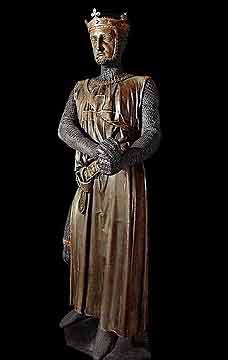
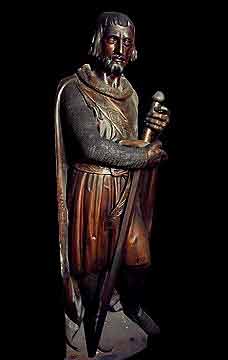
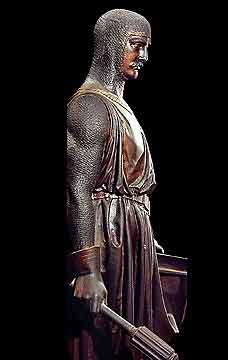


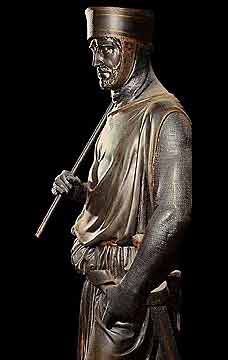
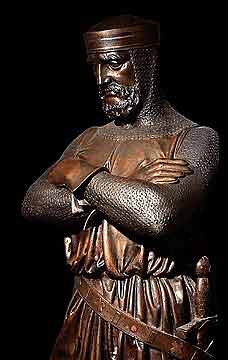
Additional Information on
Statues of Magna Carta Barons
Explore-Parliament.net: Advanced Category Search
Keyword Categories:
_Object_Portrait
_Object_Artwork
_Object_Sculpture
_Peer
_Man
_Person
_Magna
_Artist_Elkington